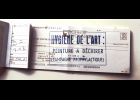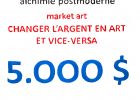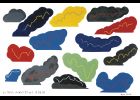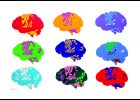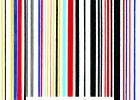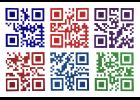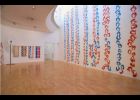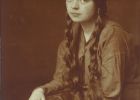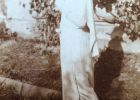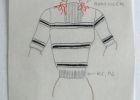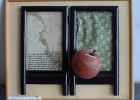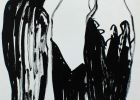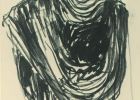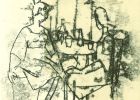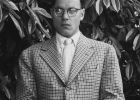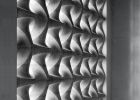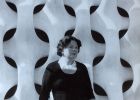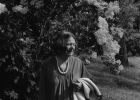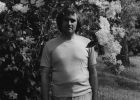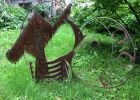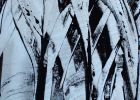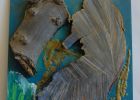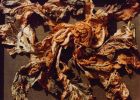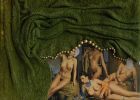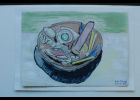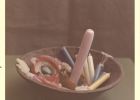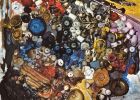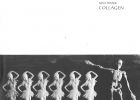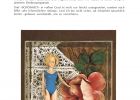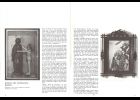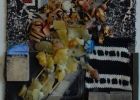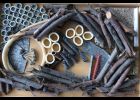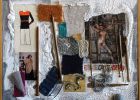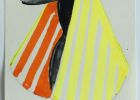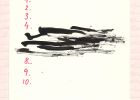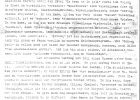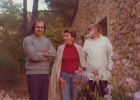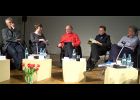Une conversation / Letters: Hervé Fischer - Vilém Flusser 1976 - 1982
This very personal bilingual interview with Hervé Fischer is preceded by a short e-mail exchange that sets the tone. It deals with Fischer’s personal relationship to Edith and Vilém Flusser, their first meeting, multilingualism, writing in French, the São Paolo Biennale, Flusser’s relationship to Alexandre Bonnier and Jeanne Gatard, Art Sociologique but also the future of Flusser’s legacy.
Vilém Flusser et la recherche-création
This paper highlights some of the parallels and resonance effects that can be observed between the way Flusser advocated dealing with the “art crisis” and the way some institutions conceive and justify their “research-creation” programs today. Seen in this way, Flusser appears to have already been calling for a way of enhancing both research and creativity a half a century ago. We have yet to understand the epistemic, aesthetic and political implications of the specific method of interrogation he proposed (the Pilpul).
Sand
The following is an excerpt from Anne Popiel’s book Of Pixels and Particles. The digital connection between nature and art in Vilém Flusser’s philosophy . Published in 2012, it explores metaphorical connections between sand grains, droplets, bits, pixels and particles, linking the ocean of the Vampyroteuthis to moving sand dunes and the screen of the computer. “Flusser’s response to groundlessness is to create one’s own ground out of thin air, modeled by oceans, squids, spider webs and sand” (Popiel 2012: 14). His “metaphors translating sand grains into pixels and wind turbulence into algorithms highlight the digital structures present in both nature and computer technology that create an environment conducive to the spontaneous emergence of new order” (ibid.:54).
Vilém Flusser, die Dolomiten und das Urvieh oder: Die ästhetische Krankheit Patriotismus
“I had seen photos of Flusser before and imagined him quite differently: much taller and more imposing. But he was short, incredibly agile, with long slim fingers, the whole person was constantly on the move. … He raved about the beauty of Merano … he loved the Italian language and culture and the Tyrolean songs that I sang to him” (Matthias Schönweger). This article by Katharina Hohenstein, which highlights some aspects of Vilém Flusser’s stay in Merano, was published in the fifth issue of the trilingual magazine vissidarte in Merano in December 2009. We thank the publishers for the opportunity to publish it here again (Rainer Guldin).
Regina Klaber Thusek und Vilém Flusser. Schönheit versus Hübschheit
Between 1973 and 1979, Vilém Flusser was friends with the artist Regina Klaber Thusek (born 1900, Römerstadt, d. 1983, Merano). Like Flusser, Klaber Thusek had a circle of friends that was international, and that showed a propensity for people with Jewish roots whose lives had been shaped by the Holocaust. Klaber Thusek, who traced her Jewish background through her father, immediately felt an affinity with Flusser, the Prague Jew. They met for the most part in Merano at the time both were living there, although the friendship culminated in a trip to Provence in May 1979. This essay, which briefly narrates Klaber Thusek’s life and her meeting with Flusser, is the result of several years of study of the artist’s estate, now held at the archive of the Palais Maming Museum in Merano. It contains extracts from the artist’s journal pertaining directly to Flusser.
Flusser’s Philosophy of Science
Many of Flusser’s books and essays refer to “science”, “epistemology”, and “knowledge”. His ways of conceptualizing these terms, however, remain to be explored in detail. To my knowledge, there is no secondary literature that analyzes “Flusser’s philosophy of science”. In this paper, I begin outlining such a project. I offer two translations of unpublished manuscripts, “La creation scientifique et artistique” (“Scientific and artistic creativity”) and “Wissenschaft, Weisheit (und Judentum)” (“Science, Wisdom (and Jewishness)). Based on an initial and very superficial analysis, I suggest locating Flusser’s concept of science at the center of a triangle of reciprocal relationships between philosophy, art, and religion.
The Free Will Impasse
This essay discusses the concepts of entropy and negentropy used by Vilém Flusser in his philosophy of photography to delineate connections between science and art. If the act of finding order within chaos has always been a quality specific to human beings, the overwhelming role machines hold in our society casts shadows on human agency. Since the Enlightenment, humankind has carried on a regimentation of nature with the goal of finding a way of theorizing everything within it. In the same way, empirical sciences have studied and portrayed the world of phenomena according to the laws of the moment. Shifting from prejudice to prejudice, however, they have never succeeded in finding an all-inclusive theory. Their way of systematization was adapted to all other areas of life, imposing itself through the norms of capitalism and production, leaving little space for human beings. In this scenario, human beings become puppets or tools. In this context, the arts are called upon to develop viable strategies to counteract the overwhelming power of social and technological control.
To Save Philosophy in a Universe of Technical Images
Philosophy, origin and apotheosis of the Humanist project, seems to have been surpassed in a world of extreme and ubiquitous automated processes. Automation threatens to truly “taken control”, and subordinate all human activity to the functions inscribed in the machine. The kaleidoscopticon of contemporary culture seems to indicate a return to pre-literate “magical thinking” but it is in fact a product of highly literate scientific, technical literacy. Flusser urges us to encounter the persistent importance of causal, textual thinking at work inside every apparatus to help steer the transformations, which are taking place in ourselves and in our world. Flusser makes this plea alongside a contention that linear, causal, conventional textual practices are no longer adequate to convey our ideas and experience highly in-formed by the new technologies. He exhorts us to use “technical images”. It becomes evident that Flusser’s project is to save philosophy, or restate the importance of philosophical practices, in an age where literacy has gone sub rosa. Using examples from Flusser’s experimental collaborations with artists Louis Bec and Fred Forest, this short essay will attempt to elaborate what Flusser means with philosophical practice, which uses technical images.
"Für eine Phänomenologie des Fernsehens" III: Nam June Paik und eine künstlerische Phänomenologie
When Vilém Flusser arrived at the conference held at the Museum of Modern Art in New York in January 1974 he did not know that an artist was responsible both for the conception and the title of the meeting. Flusser aspired to develop his media theory differently and in front of a completely different philosophical background as McLuhan. Nam June Paik, at that time in his zenith, most likely influenced Flusser philosophically as well as in terms of art examples and much more than Flusser was ready to admit in his short reference to one of Paik’s early non-electronic pre-video films. It is a bit strange that Flusser shied away from the confrontation with art in and with television. It is all the more important to determine the theoretical space that Nam June Paik must have opened to Flusser and others. Against this background it becomes clear that Flusser was able to approach the heritage of phenomenology in a more open und artistic, that is, in a more literary and essayistic way.
Vampyroteuthis Infernalis: l’alterità capovolta
The Vampyroteuthis Infernalis is a text that defies labels by layering scientific, philosophical, and anthropological perspectives. We should read it “lengthwise” in order to share the vision of this brilliant metaphorical story and post-human fairy tale. Flusser eradicates points of view that are rusty, ancient and anthropocentric. In this, he sheds a beam of light not only on the ideas but also on the method, and the point of view. Throughout the book, the literary device turns out to be a kind of powerful “antivirus” against the rhetoric and the morals of our “a priori”. The Vampyroteuthis emerges where we dive: it is the dark side, the sleep of reason and the monster of dreams; it is the common unconscious, the fear of the unknown, the repression of drives; it is what is submerged by science and religion; it is the black, the different, the other; it is what we would like to suppress in ourselves, but actually, if this emergence is slow and conscious, the subsequent integration will be healthy and productive. It will be the utopia of new humans who look out and see themselves.
